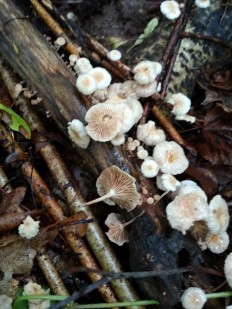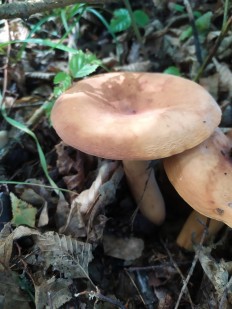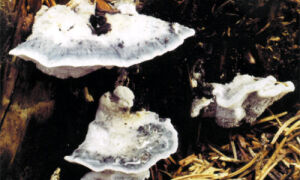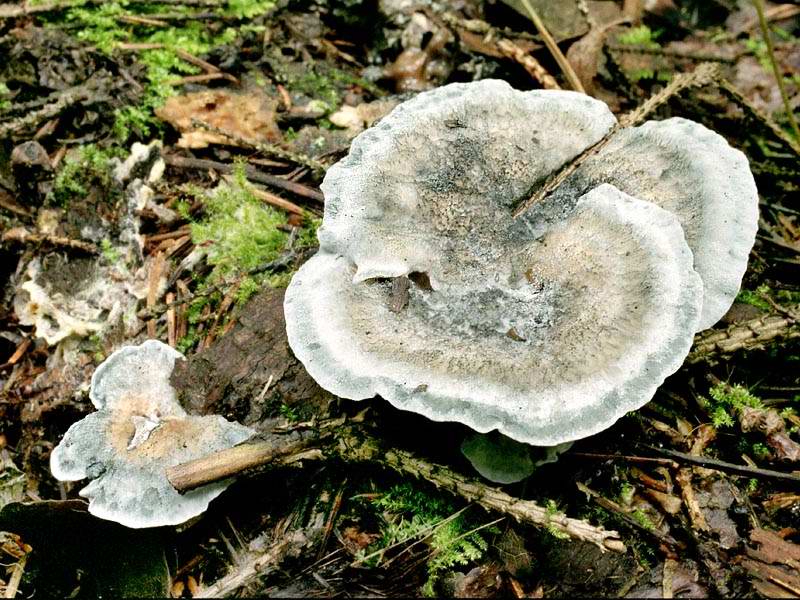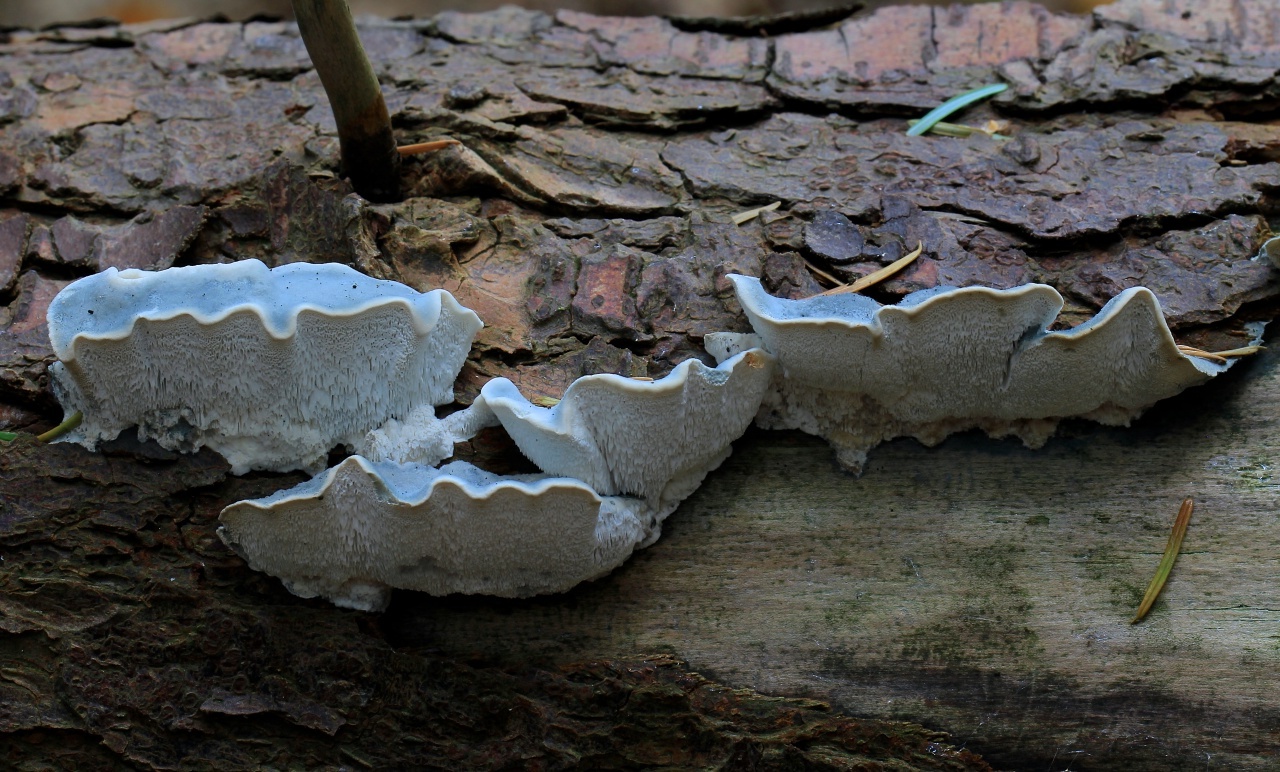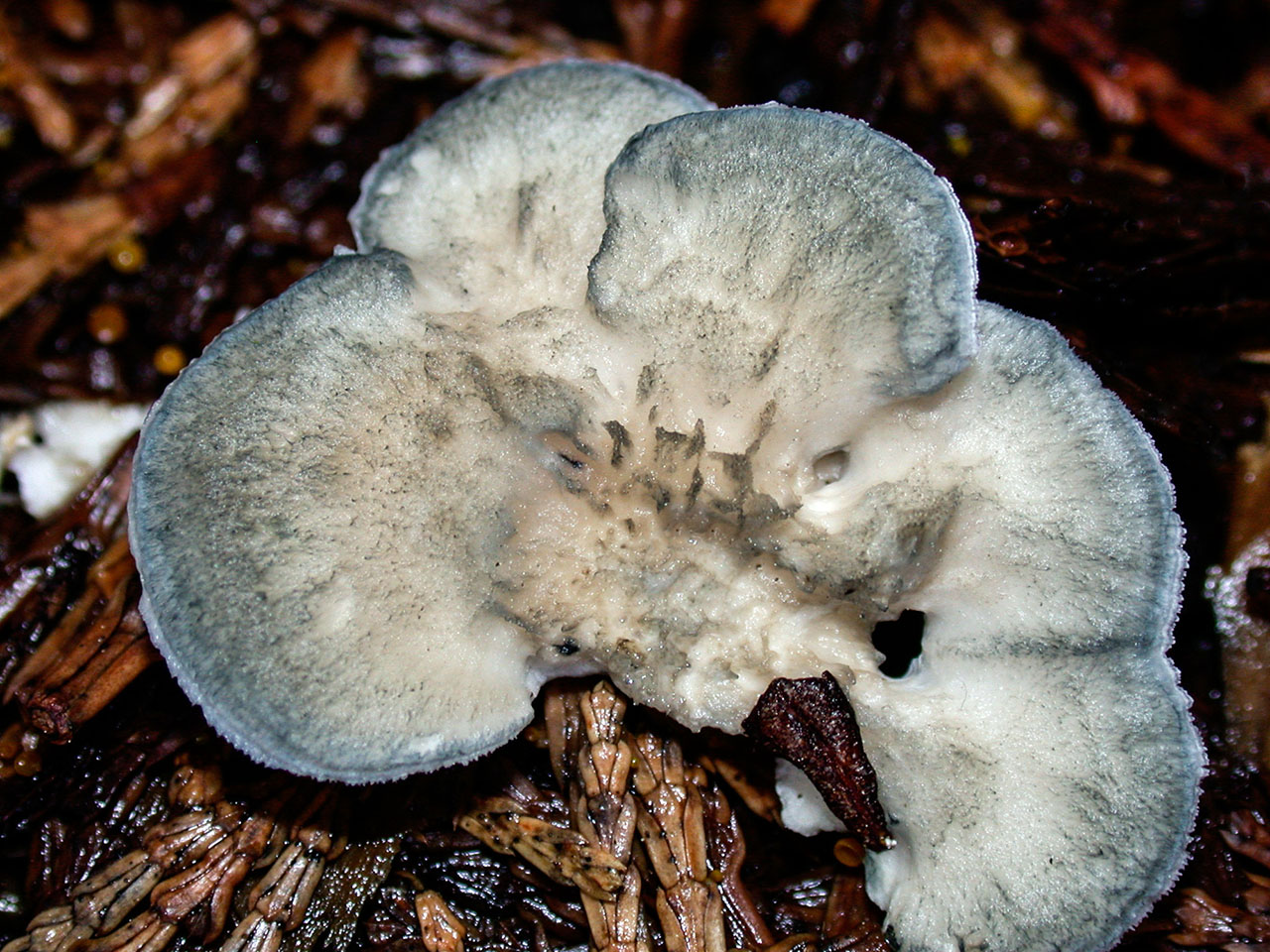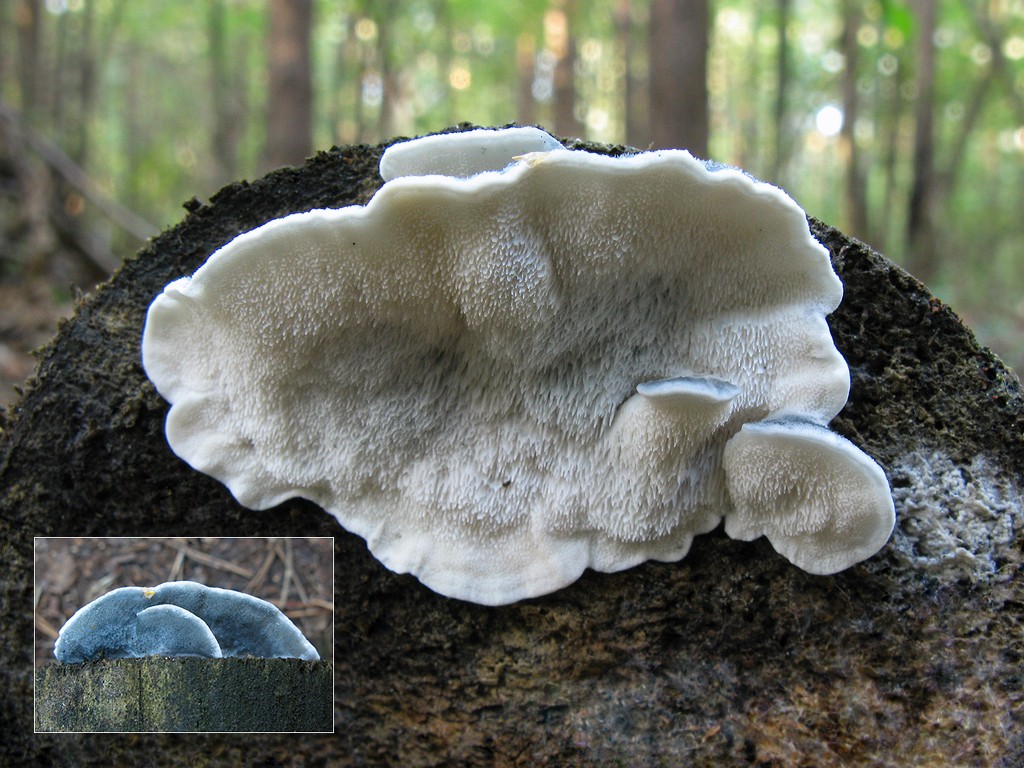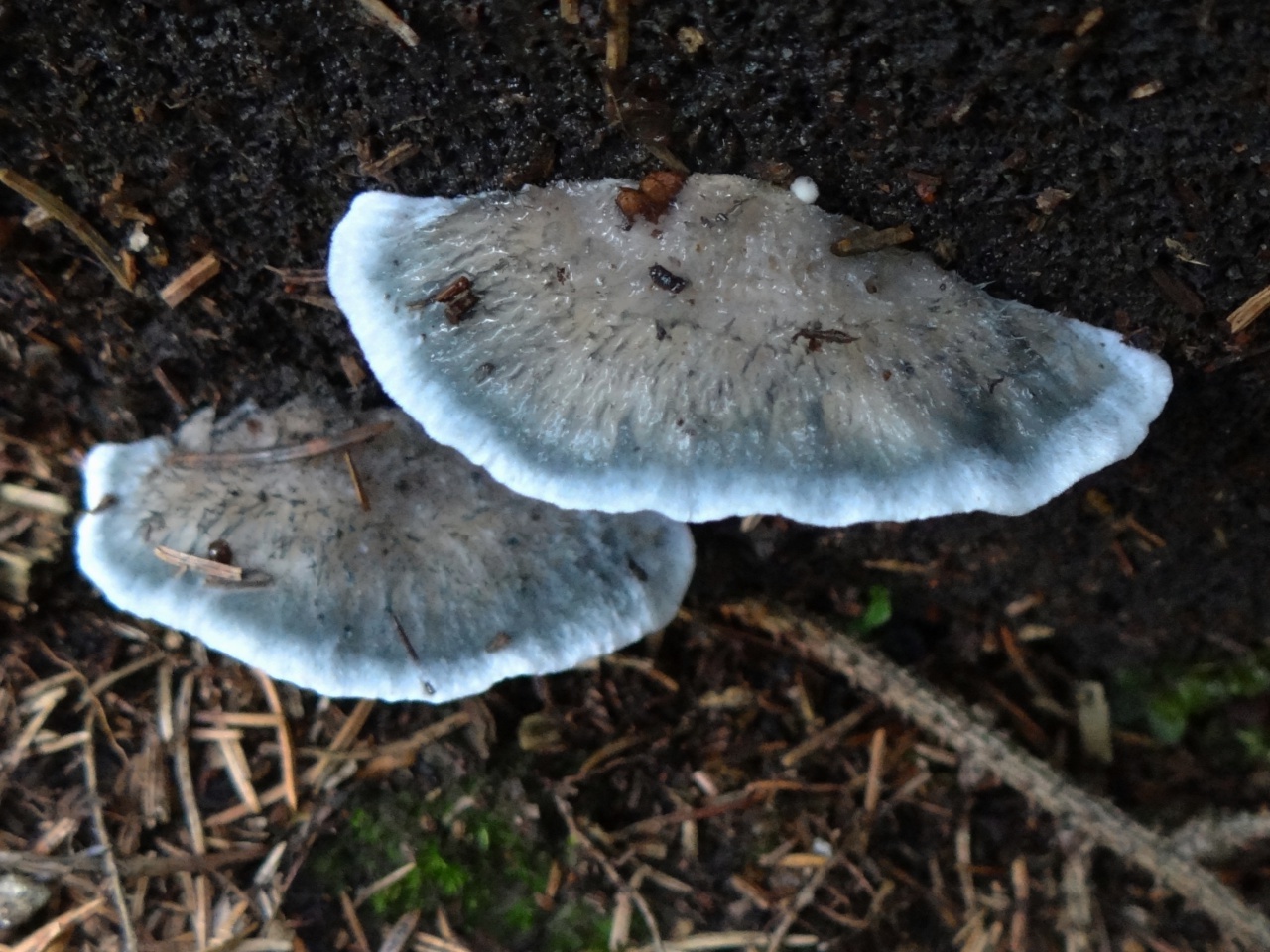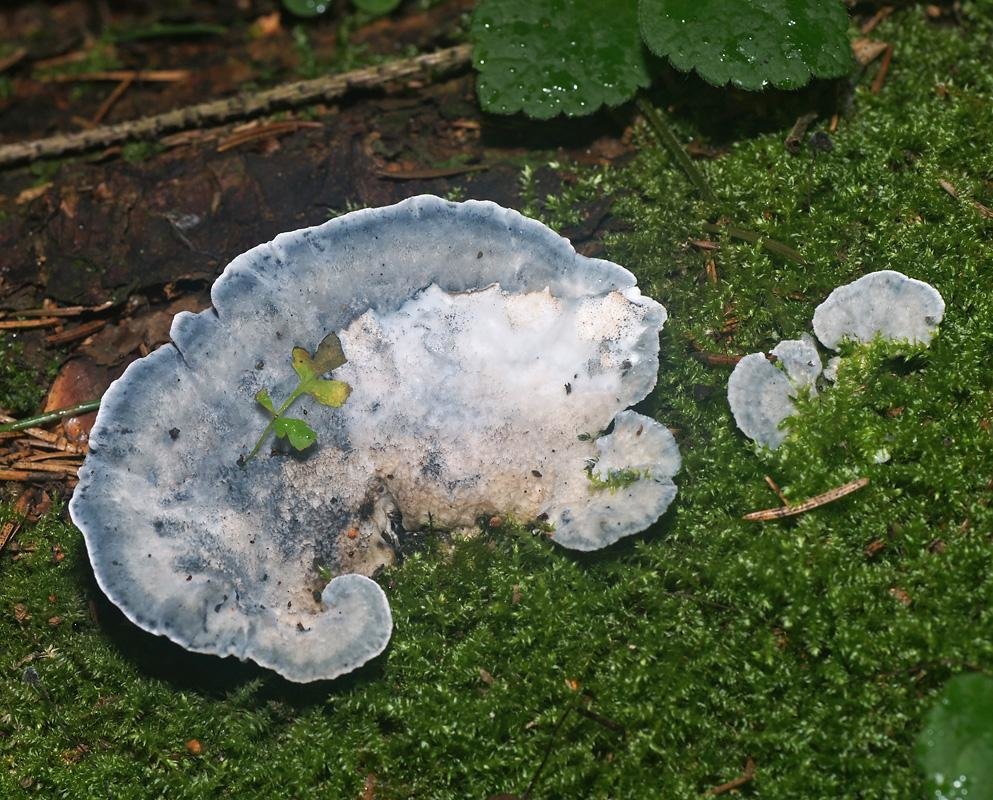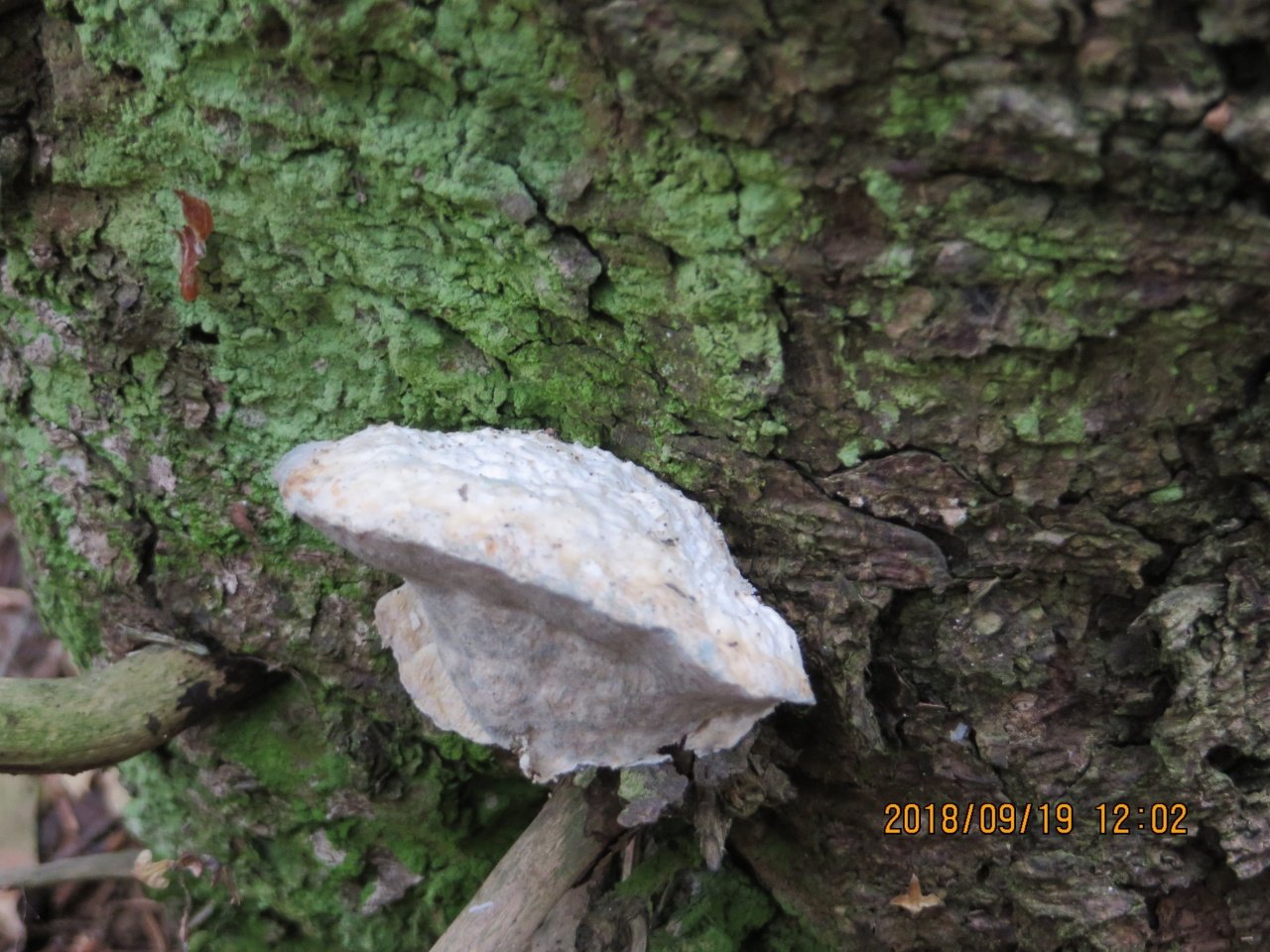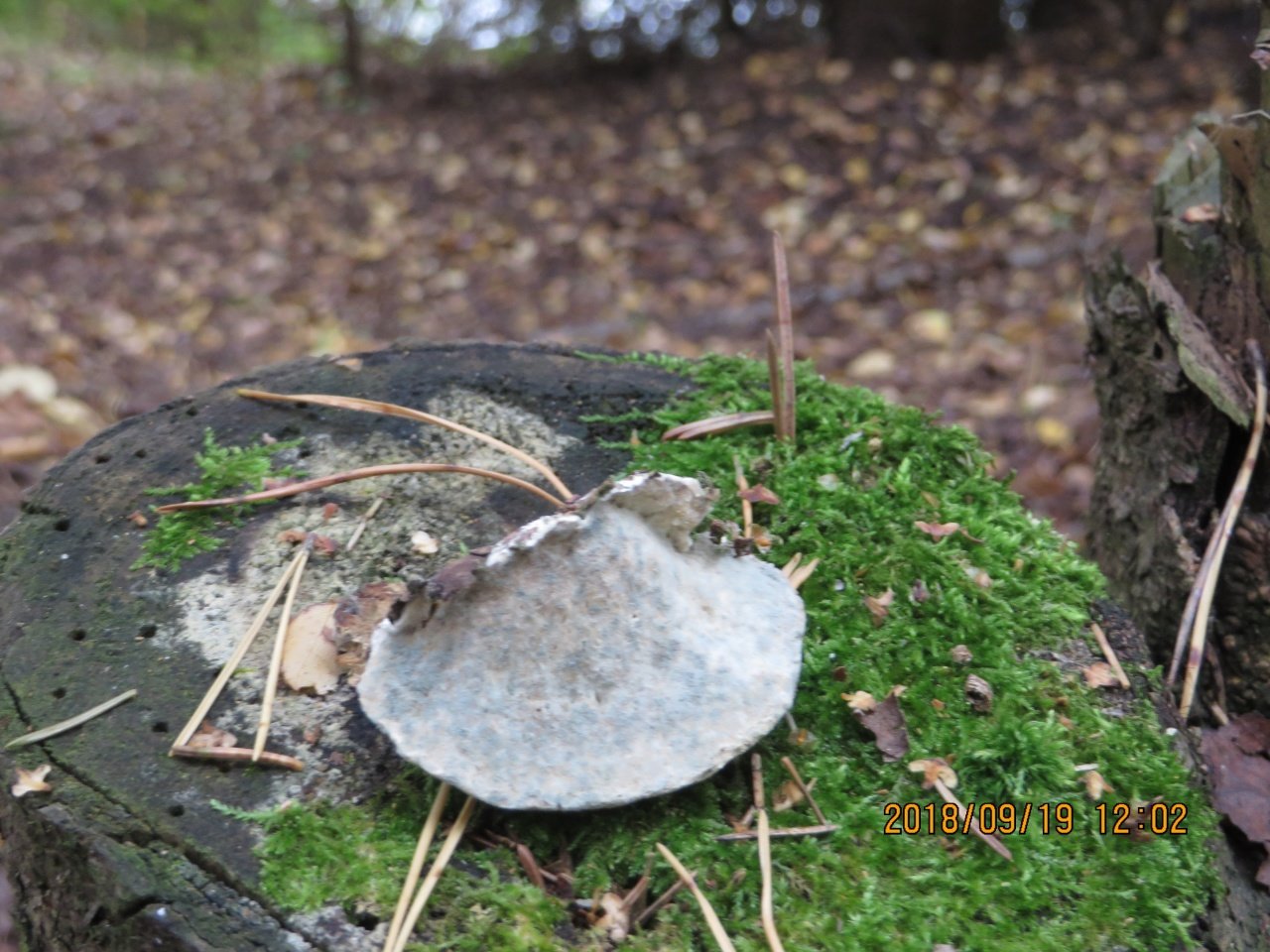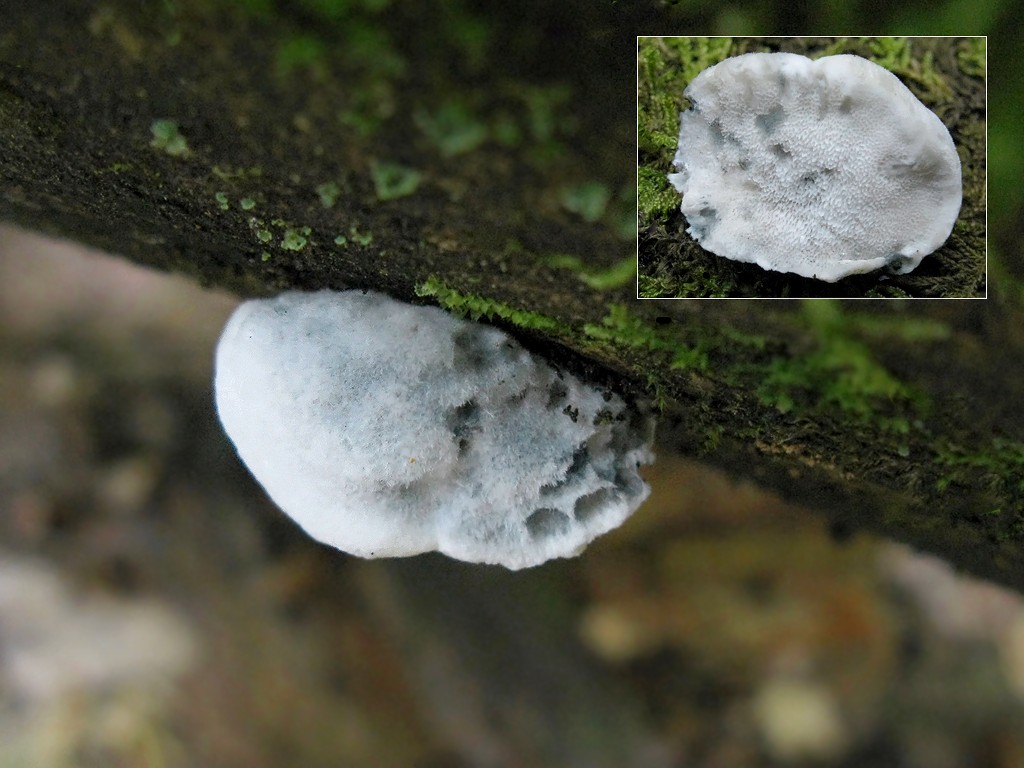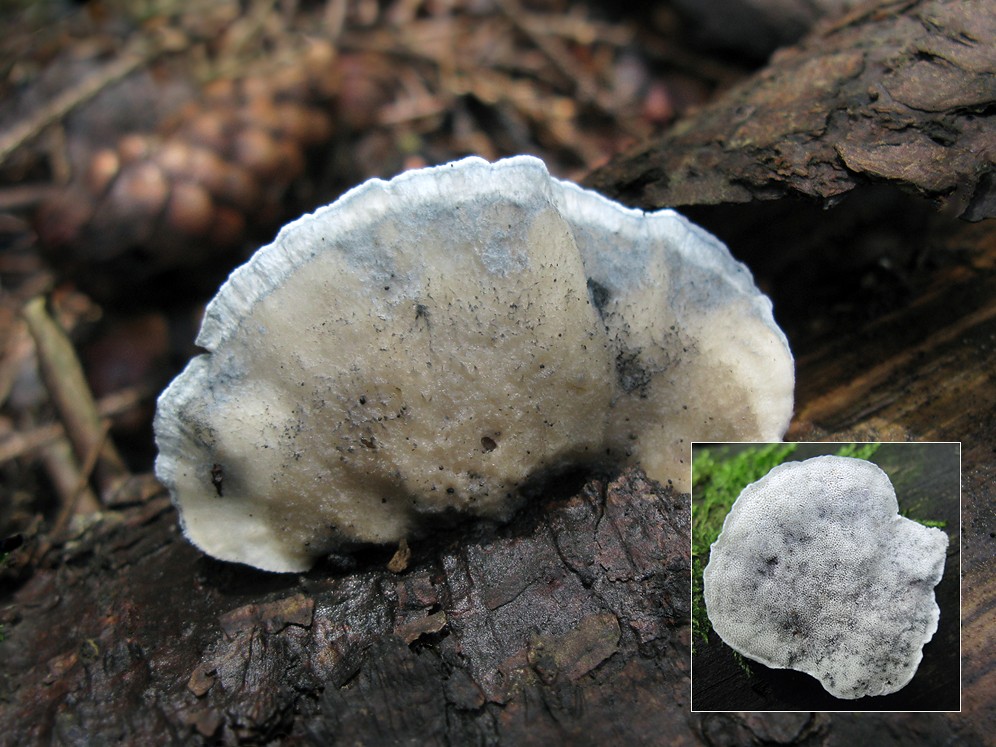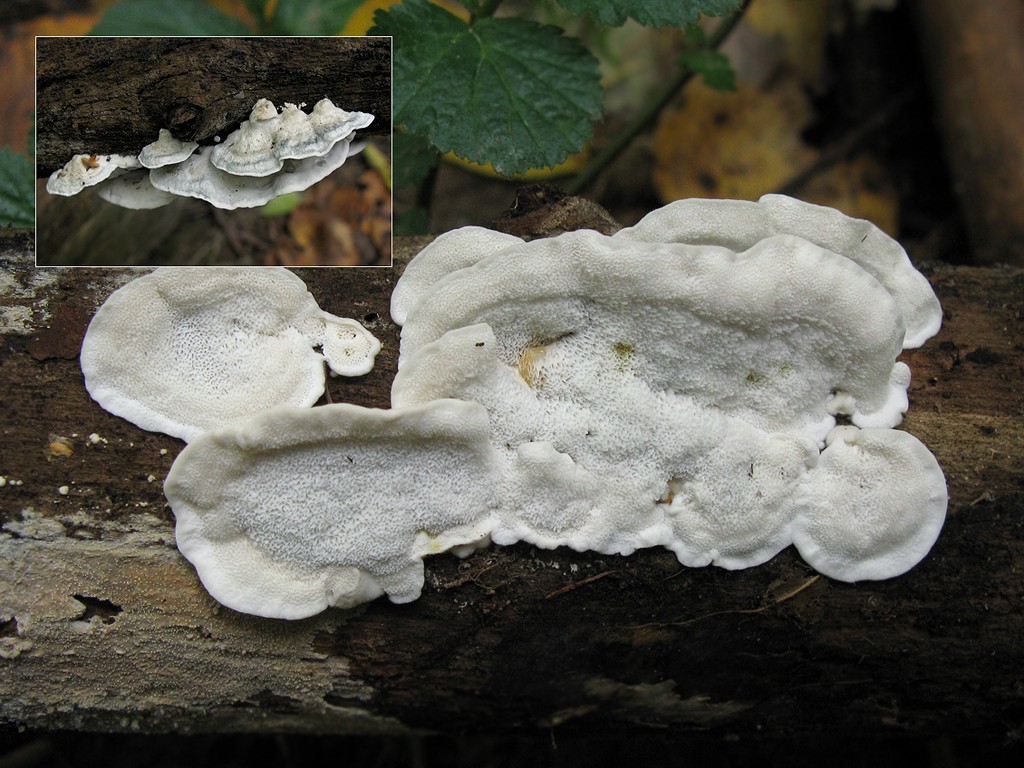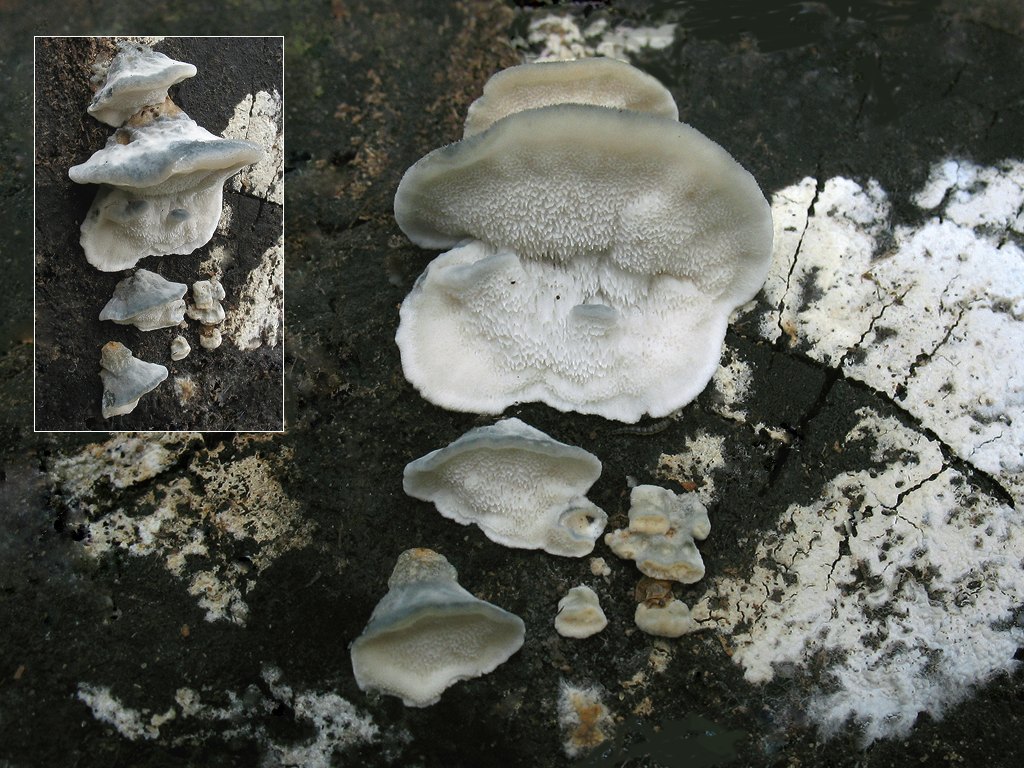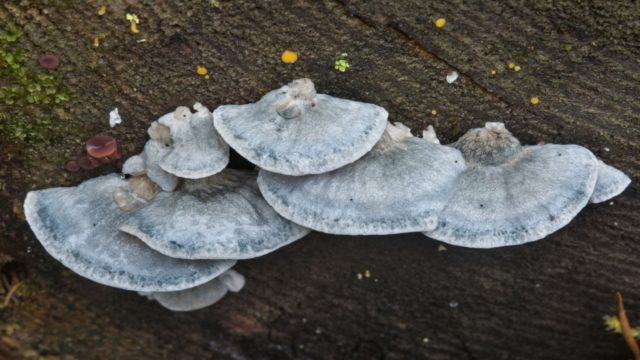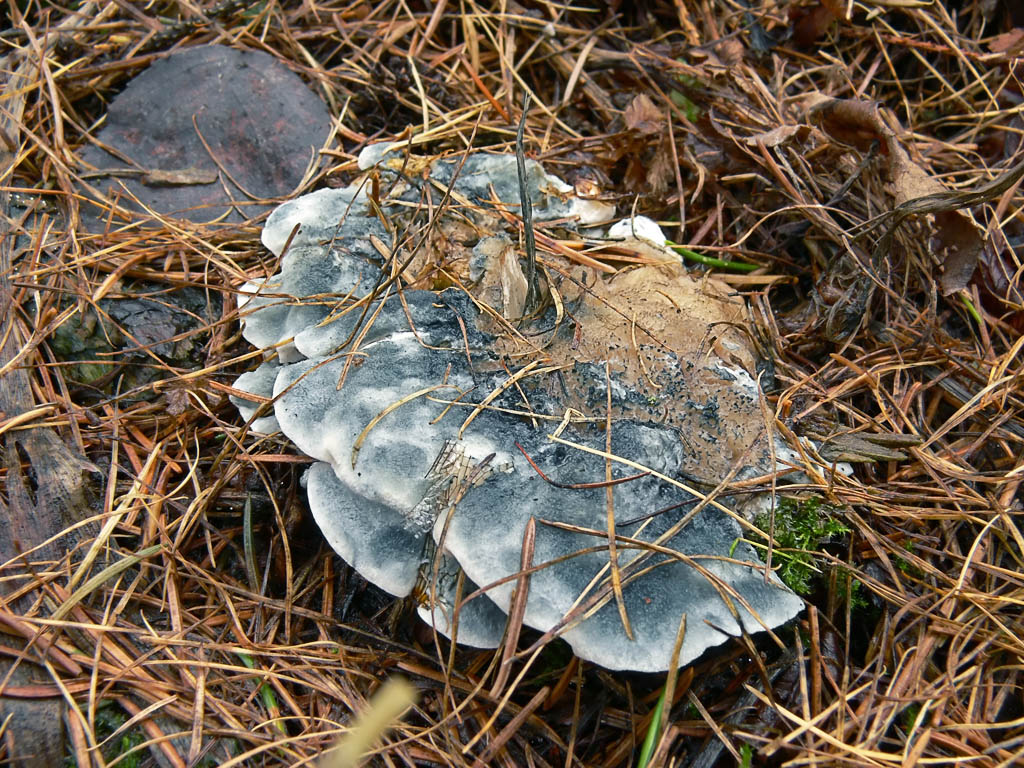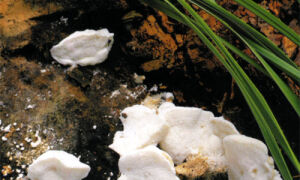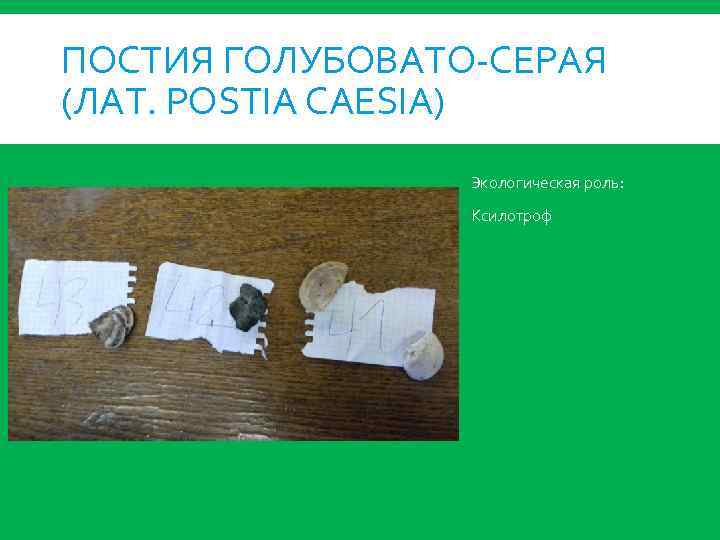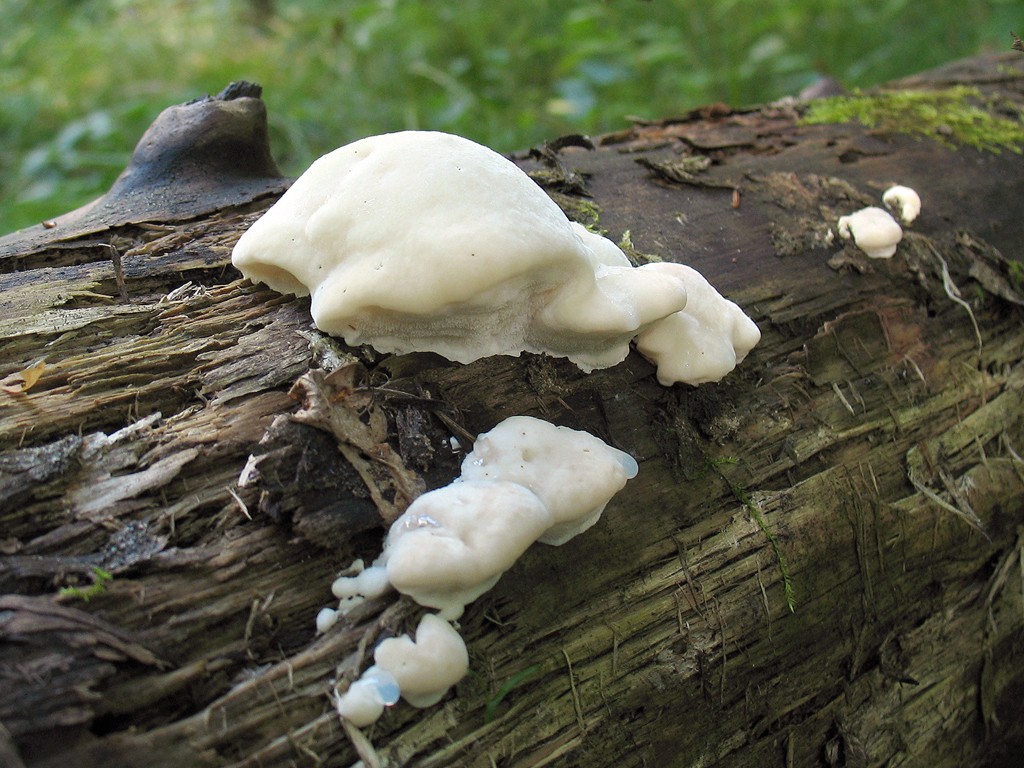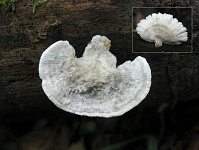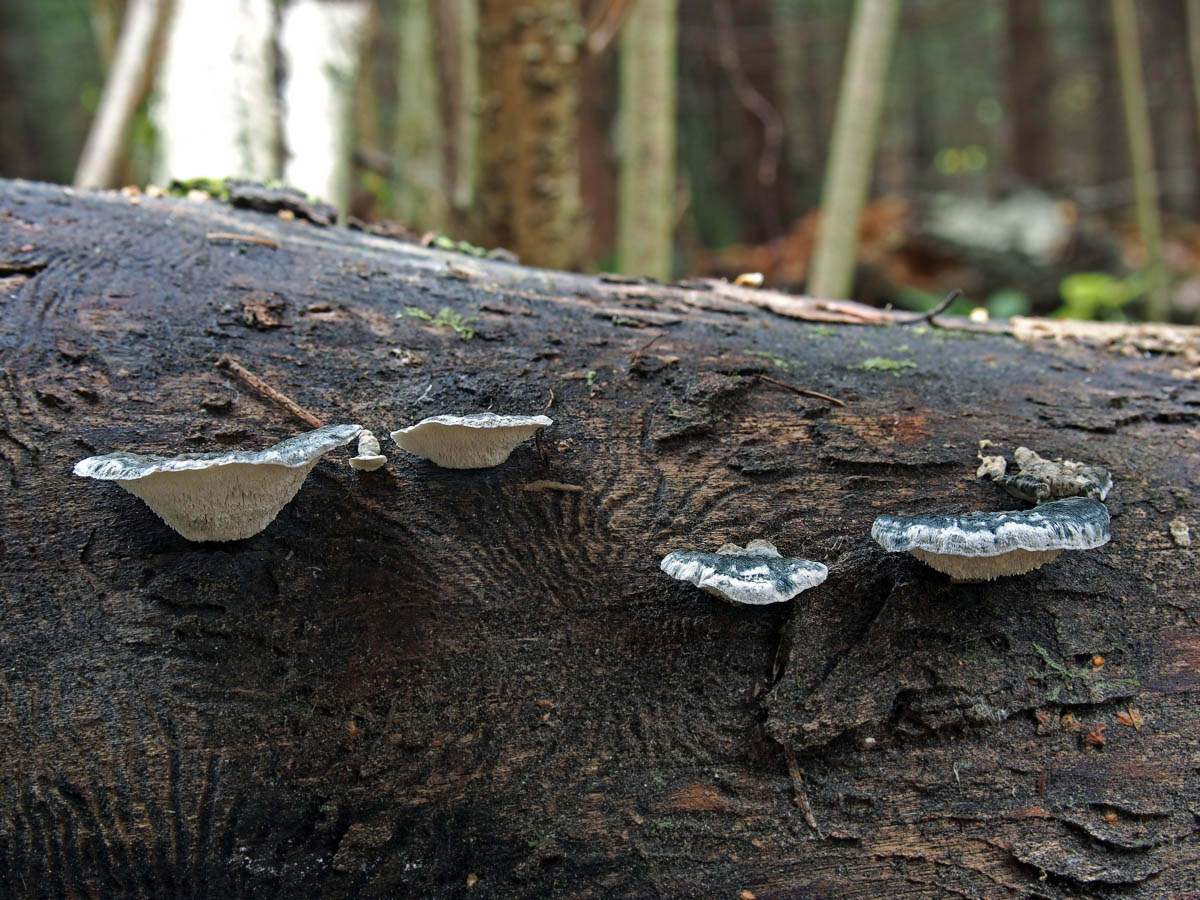Postia bluish-gray (Postia caesia)
- Other names for the mushroom:
- Oligoporus bluish gray
- Postia bluish-gray
- Postia gray-blue
Other names:
- Oligoporus bluish gray;
- The postia is bluish-gray;
- The post is gray-blue;
- Bjerkandera caesia;
- Boletus caesius;
- Oligoporus caesius;
- Polyporus caesiocoloratus;
- Polyporus ciliatulus;
- Tyromyces caesius;
- Leptoporus caesius;
- Polyporus caesius;
- Polystictus caesius;

External description
The fruiting bodies of the bluish-gray postia consist of a cap and a leg. The stem is very small, sessile, and the fruit body is half-shaped. The postia is bluish-gray, characterized by a wide spreading part, fleshy and soft structure.
The top of the hat is white with small bluish spots in the form of spots. If you press hard on the surface of the fruiting body, then the pulp changes its color to a more intense one. In immature mushrooms, the skin is covered with a bristle edging, but as the mushrooms mature, it becomes bare. The pulp of this type of mushroom is very soft, white in color; under the influence of air it becomes blue, greenish or grayish. The taste of the bluish-gray post is insipid, the pulp is characterized by a barely noticeable aroma.
The hymenophore in the fungus is represented by a tubular type, has a grayish, bluish or white color, which becomes more intense and saturated with mechanical action. The pores are characterized by their angularity and large size, and in mature mushrooms they acquire an irregular shape. The tubules of the hymenophore are long, jagged and very uneven edges. Initially, the color of the tubes is whitish, and then it becomes fawn with a bluish tint. If you press on the surface of the tube, then its color changes, darkens to bluish-gray.
The length of the cap in a bluish-gray post varies within 6 cm, and its width is about 3-4 cm. In such mushrooms, the cap often grows sideways with the stem, has a fan-shaped shape, is covered with visible villi on top, fibrous. The color of the mushroom cap is often grayish-blue-green, sometimes lighter along the edges, having yellowish tints.
Season and habitat of the mushroom
You can meet the bluish-gray posture in the summer and autumn months (from July to November), mainly on the stumps of deciduous and coniferous trees, on tree trunks and dead branches. The fungus is found infrequently, mainly in small groups. You can see the bluish-gray posttia on the dying wood of willow, alder, hazel, beech, fir, spruce and larch.
Edibility
There are no toxic and poisonous substances in the fruiting bodies of the bluish-gray Postia, but this type of mushroom is very tough, so many mushroom pickers say that they are inedible.
Similar types and differences from them
In mushroom growing, there are several closely related varieties with bluish-gray posture, differing in ecology and some microscopic features. For example, Postia bluish-gray has a difference that the fruiting bodies of the fungus do not turn blue when touched. This mushroom can also be confused with alder post. True, the latter differs in the place of growth, and is found mainly on alder wood.
Other information about the mushroom
The first description for the postia bluish-gray was by Heinrich Adolf Schrader. The scientist made it in 1794, in a group with other mushrooms that have a tubular hymenophore. In 1821, another scientist - E.M. Fries transferred the bluish-gray posture to another genus - tubular tree fungi, narrower in structure. And only in 1881, Peter Adolf Carsten transferred the mushrooms of this species to the genus Postia.
Spongiporus stipticus (Postia stiptica)
- Other names for the mushroom:
- Postia astringent
- Oligoporus astringent
- Oligoporus stipticus
- Polyporus stipticus
- Leptoporus stipticus
Synonyms:
- Oligoporus stipticus
- Spongiporus stipticus
- Tyromyces stipticus
- Polyporus stipticus
- Leptoporus stipticus
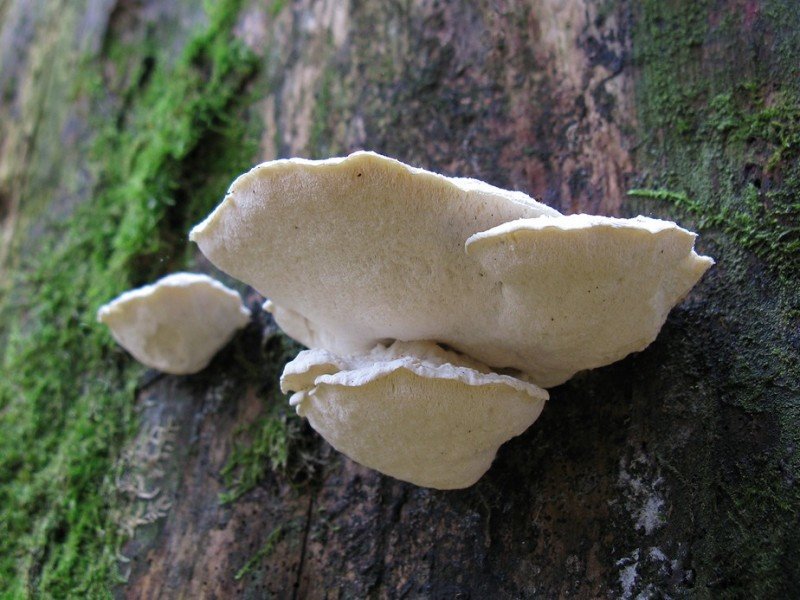
Photo by Natalia Demchenko
Spongiporus stipticus is a very unpretentious tinder fungus
It is found everywhere, attracting attention with the white color of the fruit bodies
Also, this mushroom has a very interesting feature - young bodies are often gutted, releasing drops of a special liquid (as if the mushroom is "crying").
Spongiporus stipticus (Postia stiptica) is an annual tinder fungus with medium-sized fruiting bodies (although some specimens can be quite large).
The shape of the bodies is different: kidney-shaped, semicircular, triangular, shell-shaped.
Color - milky white, creamy, bright. The edges of the caps are sharp, less often blunt. Mushrooms can grow singly, as well as in groups, growing together.
The pulp is very juicy and fleshy. It tastes very bitter. The thickness of the caps can reach 3-4 centimeters, depending on the growing conditions of the mushroom. The surface of the bodies is naked, and also with slight pubescence. In mature mushrooms, tubercles, wrinkles, and roughness appear on the cap. The hymenophore is tubular (like most tinder fungi), the color is white, maybe with a slight yellowish tinge.
Season and habitat of the mushroom
Spongiporus stipticus (Postia stiptica) is a mushroom that is unpretentious to its habitat. Most often it grows on coniferous wood. Rarely, but nevertheless, you can find posttia knitting on deciduous trees. Active fruiting of mushrooms of this genus occurs from mid-summer to the very end of autumn. It is very easy to identify this type of mushroom, because the fruit bodies of the postia astringent are very large and taste bitter.
Posttia viscous bears fruit from July to October inclusive, on stumps and dead trunks of coniferous trees, in particular, pines, spruces, fir. Sometimes this type of mushroom can also be seen on hardwood (oak, beech).
Edibility
Astringent postia (Postia stiptica) is one of the little-studied mushrooms, and many experienced mushroom pickers consider it inedible because of the viscous and bitter taste of the pulp.
Similar types and differences from them
The main species, similar to the astringent post, is the inedible poisonous mushroom aurantioporus fissured. The latter, however, has a milder taste, and grows mainly on hardwood. Mostly fractured aurantioporus can be seen on the trunks of aspens or apple trees. The outwardly described species of mushrooms is similar to other fruiting bodies from the genus Tyromytes or Postia. But other varieties of mushrooms taste less viscous and rancid than Postia stiptica.
Other information about the mushroom
Droplets of transparent moisture, sometimes whitish in color, often appear on the fruiting bodies of the post astringent. This process is called gutting, and is manifested mainly in young fruit chalk.
Biological description [| code]
Fruiting bodies are short-lived, capped, sessile, sometimes growing together on the sides, half-shaped, with a wide, spreading part, relatively soft, fleshy, usually about 1 × 2 × 1 cm.The upper surface of the cap is white, with bluish patches or spots, when touched more intensely bluing , in young mushrooms covered with bristly pubescence, then bare. The pulp is moist, soft, white, slightly bluish, gray or green when exposed to air. The smell is there, the taste is insipid.
The hymenophore is tubular, white, grayish or bluish in color, when pressed, acquiring a more intense color. The pores are angular, in old mushrooms of irregular shape.
The hyphalous system is monomytic. Hyphae are thin or thick-walled, branched, uncolored, intertwined in the tram, parallel in the hymenophore. Basidia are two- or four-spore, 12–20 × 4–6 µm. Spores are cylindrical or allantoid, uncolored, usually non-amyloid 4-6 x 1.5-2 µm.
Postia does not contain any poisonous substances, however, its tough thin fruiting bodies do not allow it to be ranked among edible mushrooms.
Similar species | code
Several closely related species are known, differing mainly in microscopic features and ecology.Postia bluish-grayish differs in the fruiting bodies that do not turn blue when touched. Postia alder grows on alder.

